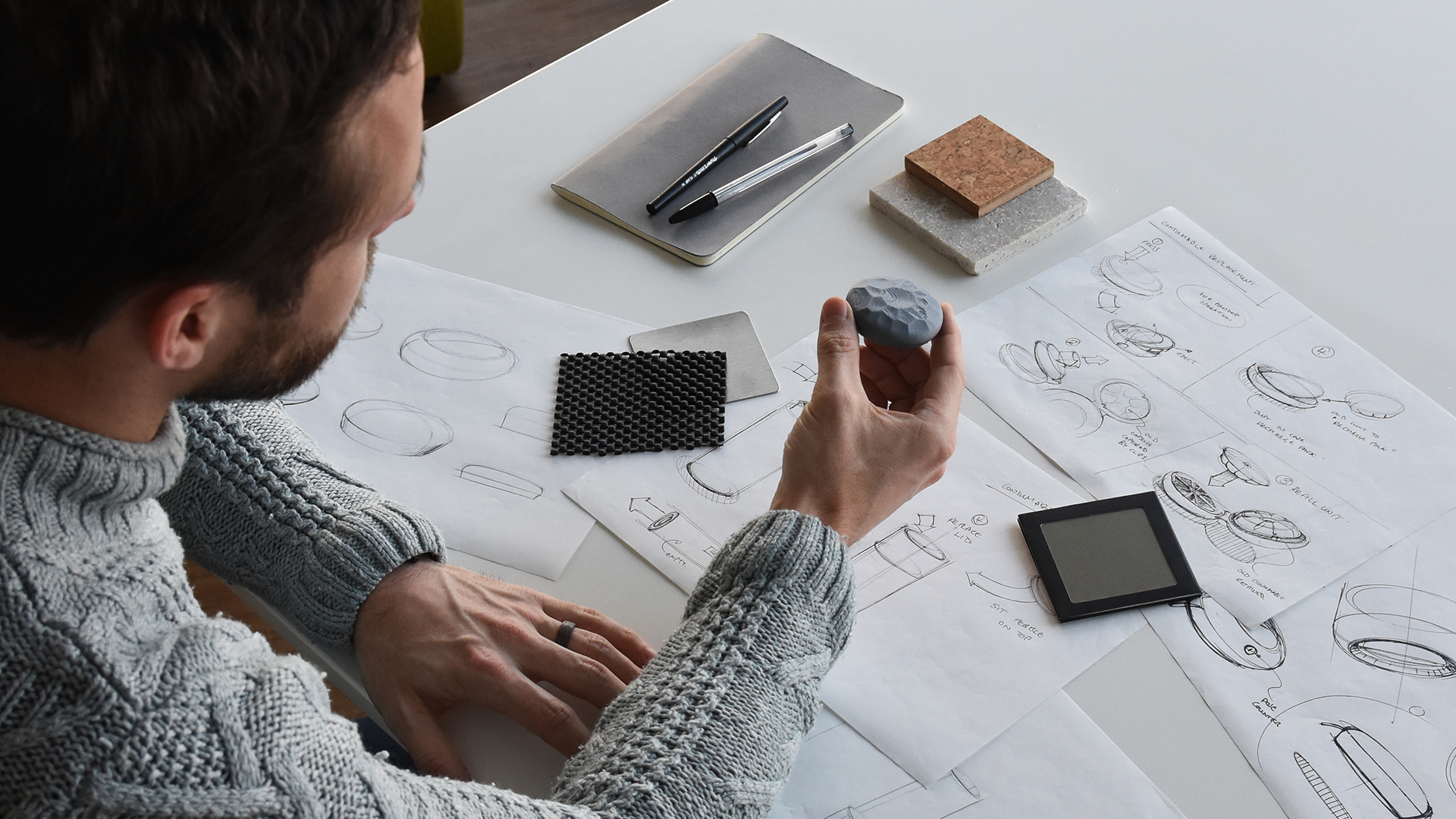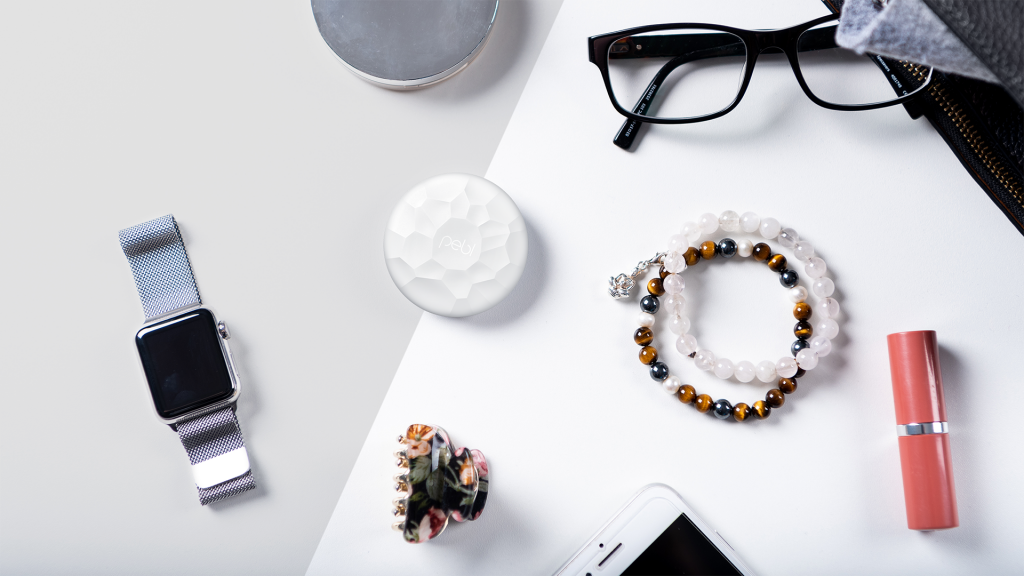PEBL forms part of Cambridge Consultants designs to help us all live better lives as we get older
Although a natural part of the ageing process, the menopause is still seen by many to be merely a ‘women’s issue’, often ignored or marginalised and denied the focus of technology developers.
Up to 80 per cent of menopausal women will experience hot flushes, either during the day or at night and recurring on average for a period of 7 years.
As part of Cambridge Consultants’ wider exploration of life-long health, and the technologies that will enable us to take control of our own wellbeing, a team set out to design a product that could help ease these uncomfortable hot flushes.
One of the initial stages was for Cambridge Consultants to partner with the UK National Innovation Centre for Ageing, to explore women’s experiences of the menopause and to propose some technology-based interventions.
Research sessions with women held at the centre reported that most arrived at the menopause feeling unprepared for the major impact that it would have on their lives.
Hot flushes were unpredictable, arriving suddenly and having a disruptive effect in the workplace or on sleep during the night.
While there are a variety of strategies to enable women to manage these hot flushes – from drug-based approaches such as HRT to herbal remedies and cooling pillows – the over-riding sense was that symptoms are difficult to manage.
One woman commented that she was irritated by the disruption it was causing to her life, leaving her tired and its effects having a serious impact on her life.

Cool Off
The initial concept was to create a simple to use, instant cooling device, that could be carried at all times.
Key to the product was for it to be as inconspicuous as possible in use, enabling women to take control and manage their menopausal hot flushes wherever they were.
“The initial assumption was that the cooling device would be worn on the underside of the wrist, so proof-of-concept wrist-worn devices were made in our in-house workshops,” says Cambridge Consultants engineering programme manager at Nicola Millar.
Devices would have cooling consumables loaded into them that provided instant cold relief, as if an ice cube had been applied to the skin.
The principle method for the cooling was based around using a compressed refrigerant for instant on-demand cooling, allowing for multiple cooling shots to be applied in rapid succession.
“It gets around the hot radiator effect in ‘conventional’ Peltier cooling devices, where you have to wait for the device to cool down before re-using it,” explains Millar.
The initial wrist-worn prototypes were returned to Newcastle where 30 women trialled them, but it quickly became clear that it was too restrictive, and that the participants in the study wanted the flexibility to place the device on the upper chest, neck, and face for maximum relief.
Based on these findings, new device concepts were sketched out and designed in Solidworks, with CFD simulations used to assess the cooling performance.
“It was important for the devices to sit discreetly in the palm of the hand, providing the feelings of both comfort and reassurance,” explains Millar.
“The concept that finally emerged was one that was styled on a beach pebble – thus the name ‘PEBL’.”

All In Hand
Early-stage prototype devices, representative of the size, form and material were made and iterated rapidly using Cambridge Consultant’s in-house SLS 3D printers and model shop, before final prototypes were manufactured.
These units were given to women to take away and use in their everyday lives both at home and at work, with the feedback gained fed back into updates of the design.
The approach is that when a woman feels that a hot flush is beginning, she can simply press the large button on PEBL and a small dose of a coolant is released onto the inside surface of a metal plate, creating a cold external surface that is applied to the body where desired.
Now discreetly hand-held, the compact design allows women to use it in public, at home or at work, without drawing unwelcome attention.

Subtle surface detailing added by the team helped create a more tactile outer shell and made for a more comfortable experience.
The use of replaceable refrigerant capsules means that the device is always ready to go, without the downtime of charging a Peltier-type system.
“Pebal is merely the beginning,” says Millar. “We’re seeking a deeper understanding of the ageing process, listening to what can really help improve people’s lives and supporting self-directed management of our health.”
Already work has begun on looking at the IoT integration of the device and utilising a dose counter, with insights displayed on a smartphone.
The goal of this data collection being to help users to better understand their symptoms and triggers – finding patterns that could help them to adjust their lifestyle to reduce the number of hot flushes they experience.
Additionally, the team are assessing PEBL’s cooling technology for aiding other conditions, such as helping cancer sufferers, including breast and prostate patients as well as people with thyroid conditions, or further applications for rapid cooling in sports and fitness.
“Lifelong health is about supporting people in making the right life choices in order to maximise their chances of staying healthy for longer and we’re committed to further exploration of the products and services that can support us through age-related change,” concludes Millar.
Helping us all live better lives as we get older is a cornerstone of modern product design, and one the PEBL is firmly grounded in.






